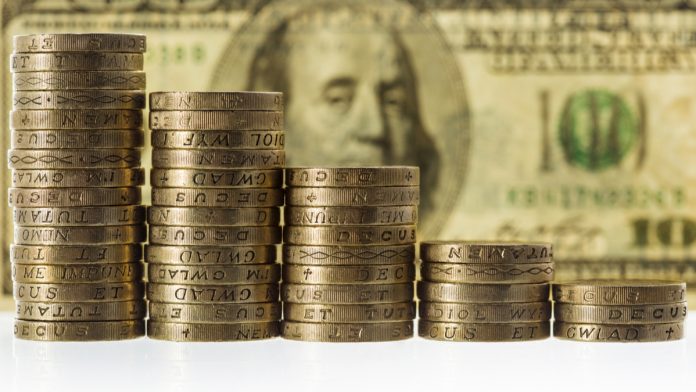- Pound (GBP) advances on Brexit optimism and government spending plans
- UK growing coronavirus figures could cap gains
- US Dollar (USD) rallied following upbeat manufacturing data which calmed fears that rising coronavirus numbers were hampering the economic rebound
- Congress fail to reach a deal on US rescue package
After losing 0.2% across the previous session, the Pound US Dollar (GBP/USD) exchange rate is attempting to claw back losses in early trade on Tuesday. The pair settled at US$1.3075 on Monday after having picked up from the session low of US$1.3004.
At 06:15 UTC, GBP/USD trades +0.05% at US$1.3080. This is at the upper end of the daily traded range.
The Pound is edging mildly higher heading towards the London open amid increasing optimism of a soft Brexit and additional government economic stimulus.
The British government confirmed a £900 million funding boost for more than 300 projects in England. These projects aim to speed up the construction of homes and infrastructure.
Adding to the upbeat tone it has been reported that the EU is willing to compromise in an attempt to rescue Brexit talks which have been deadlocked for weeks. The EU is reportedly considering softening its demand that the UK heeds to EU rules on state aid in the future.
Whilst there is no high impacting macros economic data, coronavirus statistics will remain be in focus and could cap any gain in sterling. The UK reported 938 new coronavirus cases on Monday, the highest since June.
The rebound in the US Dollar seen on Monday showed signs of stalling on Tuesday as investors weighed up upbeat data against Congress’ slow progress towards a new rescue package for the US.
The US ISM manufacturing PMI showed that US manufacturing activity accelerated to its highest level in almost 18 months in July as orders ticked up despite the rise in covid cases. The data helped calm fears that the fragile economic recovery is being hampered by the resurgence in coronavirus cases across the southern states.
Whilst the data showed that the US manufacturing sector is firmly back in expansion territory, it also showed that hiring at factories remained subdued.
Democrats and Republicans said that they had made some progress towards agreeing a new rescue package, although unemployment benefits remain a ticking point. The lack of progress here could drag on the US Dollar.





